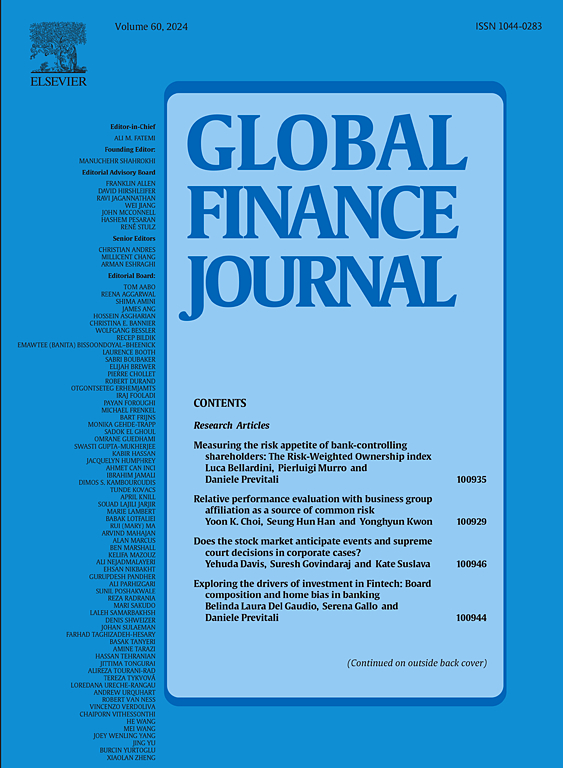Beyond the headlines: Sentiment divergence and financial distress
IF 5.5
2区 经济学
Q1 BUSINESS, FINANCE
引用次数: 0
Abstract
In the age of social media, corporate financial health is increasingly influenced by diverse and often conflicting information signals from social media and traditional news sources. This study introduces sentiment divergence, the difference in sentiment expressed on social media (X, formerly Twitter) versus traditional news media, as a novel predictor of financial distress. Analyzing 1823 U.S. firms from the first quarter of 2015 to the first quarter of 2021, the results reveal that a one standard deviation increase in sentiment divergence decreases the one-year probability of default by 7-basis points, supporting theories that diverse information enhances market efficiency. Conversely, a one standard deviation increase in the volatility of this divergence increases the default probability by 46-basis points, highlighting the destabilizing influence of fluctuating sentiment, consistent with noise trading theories. Furthermore, heightened institutional investor attention dramatically amplifies financial distress, as a one standard deviation increase in institutional investor attention increases the likelihood of default by 869-basis points, underscoring how herding behavior and informational cascades can amplify financial distress. This study contributes to behavioral finance by demonstrating the complex interplay between information diversity, sentiment volatility, and investor behavior in shaping corporate financial outcomes, offering crucial implications for investors, managers, and regulators.
在头条新闻之外:情绪分歧和金融困境
在社交媒体时代,企业的财务状况越来越受到来自社交媒体和传统新闻来源的多样化且往往相互冲突的信息信号的影响。本研究引入了情绪差异,即社交媒体(X,以前的Twitter)与传统新闻媒体上表达的情绪差异,作为财务困境的新预测指标。分析了2015年第一季度至2021年第一季度的1823家美国公司,结果表明,情绪差异每增加一个标准差,一年期违约概率就会降低7个基点,这支持了信息多样化提高市场效率的理论。相反,这种差异的波动性每增加一个标准差,违约概率就会增加46个基点,突出了情绪波动的不稳定影响,与噪音交易理论相一致。此外,机构投资者关注度的提高极大地放大了金融危机,因为机构投资者关注度每增加一个标准差,违约的可能性就会增加869个基点,这突显了羊群行为和信息级联是如何放大金融危机的。本研究通过展示信息多样性、情绪波动和投资者行为在塑造公司财务结果中的复杂相互作用,为行为金融学做出了贡献,为投资者、管理者和监管机构提供了重要启示。
本文章由计算机程序翻译,如有差异,请以英文原文为准。
求助全文
约1分钟内获得全文
求助全文
来源期刊

Global Finance Journal
BUSINESS, FINANCE-
CiteScore
7.30
自引率
13.50%
发文量
106
审稿时长
53 days
期刊介绍:
Global Finance Journal provides a forum for the exchange of ideas and techniques among academicians and practitioners and, thereby, advances applied research in global financial management. Global Finance Journal publishes original, creative, scholarly research that integrates theory and practice and addresses a readership in both business and academia. Articles reflecting pragmatic research are sought in areas such as financial management, investment, banking and financial services, accounting, and taxation. Global Finance Journal welcomes contributions from scholars in both the business and academic community and encourages collaborative research from this broad base worldwide.
 求助内容:
求助内容: 应助结果提醒方式:
应助结果提醒方式:


